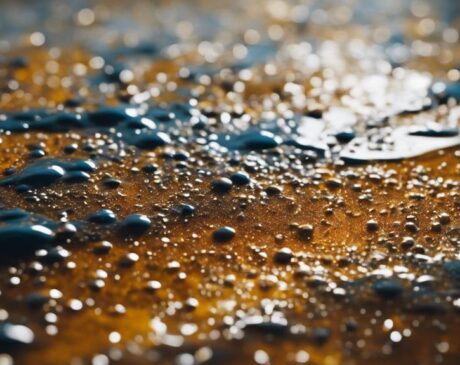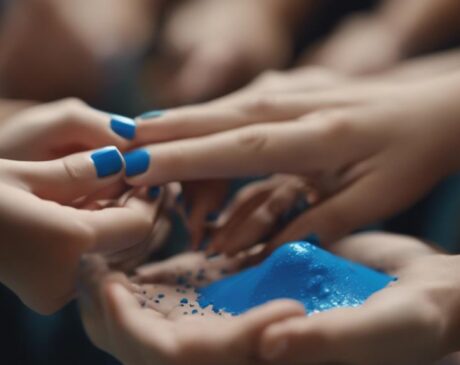How Long Should You Wait Between Each Coat of Nail Polish?
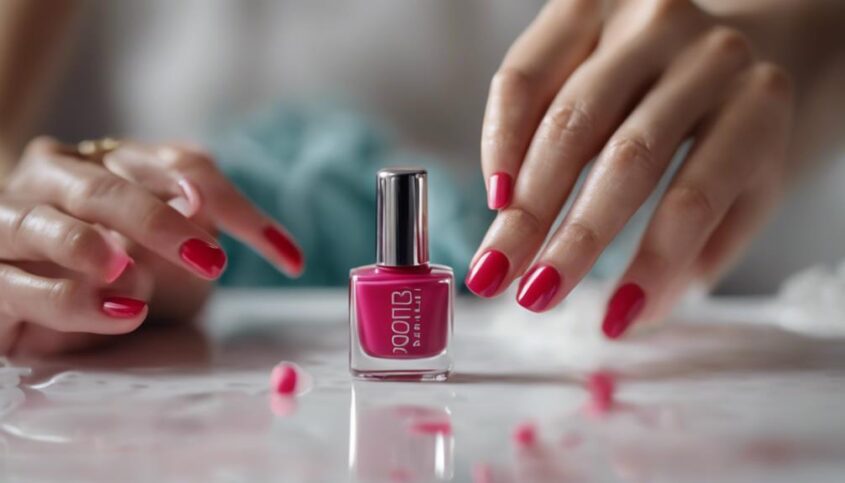
To achieve a flawless manicure, wait for around 2 minutes between each coat of nail polish. This promotes better adhesion between layers. For optimal results, consider waiting 5-10 minutes between coats. Increased intervals reduce the risk of air bubbles and enhance the durability of your manicure. Balancing speed and thoroughness is key in nail polish application. Remember, proper drying times are essential for a long-lasting finish. Want to discover more tips and tricks for your manicure success?
Key Takeaways
- Wait 2 minutes between coats for better adhesion.
- 5-10 minute intervals enhance durability and prevent air bubbles.
- Thicker coats take longer to dry than thin coats.
- High-quality polish aids in faster drying times.
- Quick-dry top coats expedite the drying process.
Importance of Drying Time
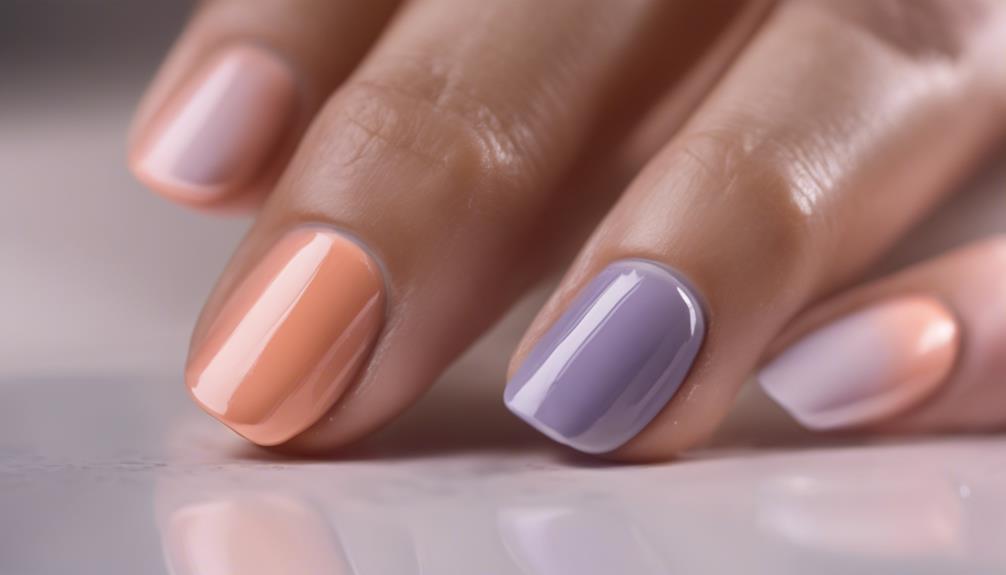
Ensuring adequate drying time between nail polish coats is crucial for achieving a flawless and long-lasting manicure. Proper drying time allows each layer to set fully, reducing the risk of smudges, dents, or bubbles that can compromise the final look. In the fast-paced world of beauty trends, innovation in nail polish formulas has made it possible to shorten drying times significantly. Advanced quick-dry formulas utilize technologies that help evaporate solvents faster while maintaining color integrity and durability.
Ideal Wait Times
Properly timing the intervals between applying nail polish coats is key to achieving a flawless manicure that withstands daily activities. When considering ideal wait times between coats of nail polish, it is essential to strike a balance between expediency and thoroughness. Waiting around 2 minutes between each coat allows the polish to set partially but still be slightly tacky, promoting better adhesion between layers. This method helps prevent smudging or denting of the polish while ensuring a smooth and even finish. However, for optimal results, a slightly longer interval of 5-10 minutes is recommended before applying the next coat. This extended wait time allows the previous layer to dry more thoroughly, reducing the risk of air bubbles forming and enhancing the overall durability of the manicure. By strategically timing the application of each coat, you can elevate your nail polish game and create long-lasting, professional-looking nails that make a statement.
Factors Influencing Drying
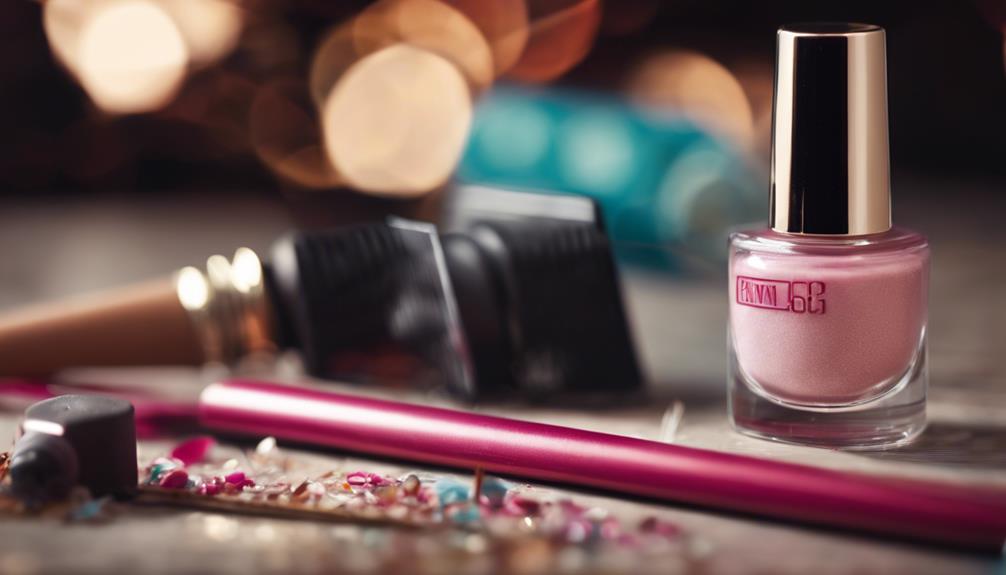
Factors influencing the drying process of nail polish include ambient humidity levels, the thickness of each coat applied, and the quality of the polish used.
| Factors | Influence on Drying Process |
|---|---|
| Ambient Humidity | High humidity can slow down the evaporation of solvents in polish, prolonging drying time. Low humidity speeds up drying. |
| Coat Thickness | Thick coats take longer to dry as the solvents within the polish need more time to evaporate. Thin coats dry faster. |
| Polish Quality | Higher quality polishes often contain fast-drying formulas, leading to quicker drying times compared to lower quality alternatives. |
Understanding these factors can help optimize the drying process of nail polish, ensuring a faster and more efficient application. By considering the ambient humidity, applying thin coats, and using high-quality polish, individuals can expedite the drying time and achieve flawless manicures with ease.
Tips for Faster Drying
To expedite the drying process of nail polish, consider implementing efficient drying techniques. Here are some innovative tips for faster drying:
- Quick-dry top coat: Apply a quick-dry top coat over your nail polish to help it set and dry faster.
- Cold water rinse: After allowing your nails to air-dry for a few minutes, submerge them in a bowl of cold water to speed up the drying process.
- Blow dryer on cool setting: Use a blow dryer on the cool setting to gently blow air over your nails, helping the polish dry more quickly.
- Thin layers: Apply thin layers of nail polish rather than thick coats, as they will dry faster and more evenly.
- Drying drops: Invest in drying drops specifically designed to accelerate the drying time of nail polish.
Common Mistakes to Avoid
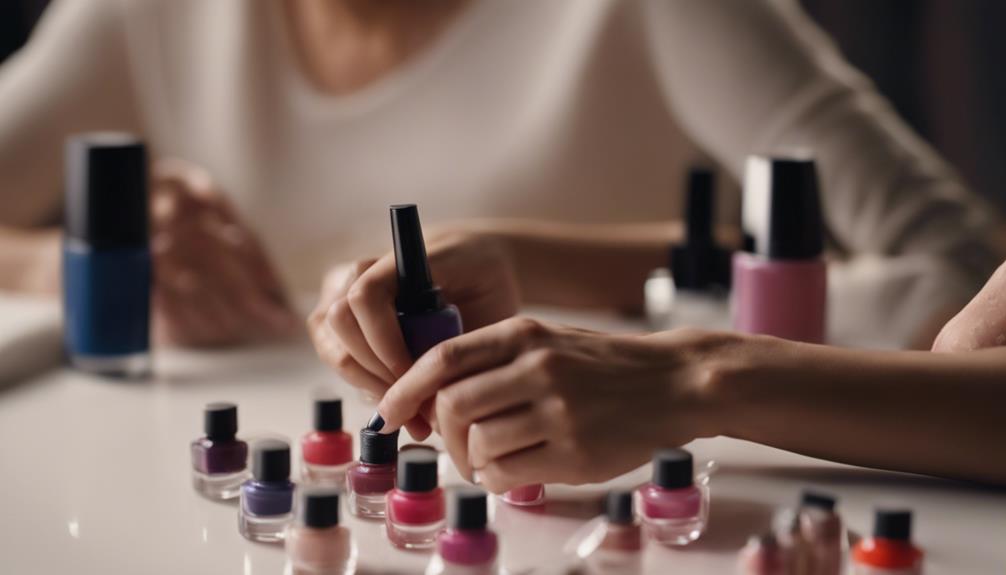
When aiming for a flawless nail polish application, it is imperative to steer clear of common mistakes that can hinder the overall quality and longevity of your manicure. One of the most prevalent errors is skipping the base coat. While it may seem like an unnecessary step, a base coat not only helps the polish adhere better to your nails but also prevents staining and yellowing, ultimately prolonging the lifespan of your manicure.
Another mistake to avoid is applying thick coats of nail polish. Thick layers take longer to dry, leading to smudges and dents. It's better to apply multiple thin coats, allowing each layer to dry properly before adding the next one. Additionally, shaking the nail polish bottle vigorously can introduce air bubbles, resulting in an uneven application. Instead, gently roll the bottle between your palms to mix the polish.
Lastly, neglecting to seal the edges of your nails with both the color and topcoat can cause chipping. Ensure that you cap the free edge of your nail with each layer to create a durable seal. By avoiding these common mistakes, you can achieve a flawless and long-lasting manicure.
Frequently Asked Questions
Can You Use a Hairdryer to Speed up the Drying Process of Nail Polish?
Certainly, using a hairdryer can speed up the nail polish drying process. Notably, 85% of individuals find this method effective. The warm air helps to set the polish faster, allowing for quicker application of subsequent coats.
Will Using a Top Coat Make a Significant Difference in Drying Time?
Using a top coat can significantly reduce drying time by creating a protective barrier that seals in the layers of nail polish underneath. It also enhances shine and durability. Choose a quick-dry formula for optimal results.
Is It Better to Apply Thin Coats of Nail Polish to Speed up Drying Time?
Thin coats of nail polish aid in expedited drying, ensuring a flawless finish. This technique promotes even application, preventing smudges and chips. Implementing this innovative approach optimizes drying time and enhances the longevity of your manicure.
Can the Type of Nail Polish Remover Used Affect How Long It Takes for Nail Polish to Dry?
The type of nail polish remover used can impact drying time by leaving residue that interferes with adhesion and evaporation. Acetone-based removers tend to dry faster, while acetone-free options may prolong drying.
Does the Temperature and Humidity of the Room Impact How Quickly Nail Polish Dries?
The temperature and humidity of a room can significantly impact the drying time of nail polish. Warmer temperatures and lower humidity levels generally promote faster drying, while cooler environments with higher humidity may prolong the drying process.

